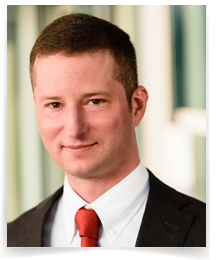
Kip Werking
has been practicing intellectual property law for over a decade and is registered as a patent attorney before the United States Patent and Trademark Office. Kip previously worked with multiple patent law boutiques where he assisted dozens of technology companies in preparing and prosecuting patent applications. He has extensive experience working with the following technology areas: displays, projectors, xerography, electric vehicles and batteries, digital cameras and optics, games and artificial intelligence, cellular networks, and software security systems.

Recent Articles by Kip Werking
“Many believe the root cause of the patent system’s dysfunction is that the U.S. Patent and Trademark Office [USPTO] is issuing too many invalid patents that unnecessarily drain consumer welfare, stunt productive research, and unreasonably extract rents from innovators.” That quote from Professors Michael Frakes and Melissa F. Wasserman echoes a common complaint in patent policy conversations. The USPTO is widely perceived as issuing too many bad patents.
Since U.S. Patent and Trademark Office (USPTO) Director Andrei Iancu took office, I have observed, with admiration, how he has taken bold action to improve perceived problems in the patent system. The Director’s bold action has also caught the attention of members of the Supreme Court. Justice Gorsuch, joined by Chief Justice Roberts, observed, “[n]or has the Director proven bashful about asserting these statutory powers to secure the [policy judgments] he seeks.”
Oil States Energy v. Greene’s Energy Group, 138 S.Ct. 1365, 1381 (2018) (Gorsuch, J., dissenting).
I wonder, however, whether the law now permits Director Iancu to do something even bolder: create rules interpreting Section 101, at least within the limited context of the America Invents Act’s (AIA’s) post-grant review trials, such that courts may defer to the Director’s interpretation under Chevron U.S.A., Inc. v. Natural Resources Defense Council, Inc., 467 U.S. 837 (1984).

![[IPWatchdog Logo]](https://ipwatchdog.com/wp-content/themes/IPWatchdog%20-%202023/assets/images/temp/logo-small@2x.png)